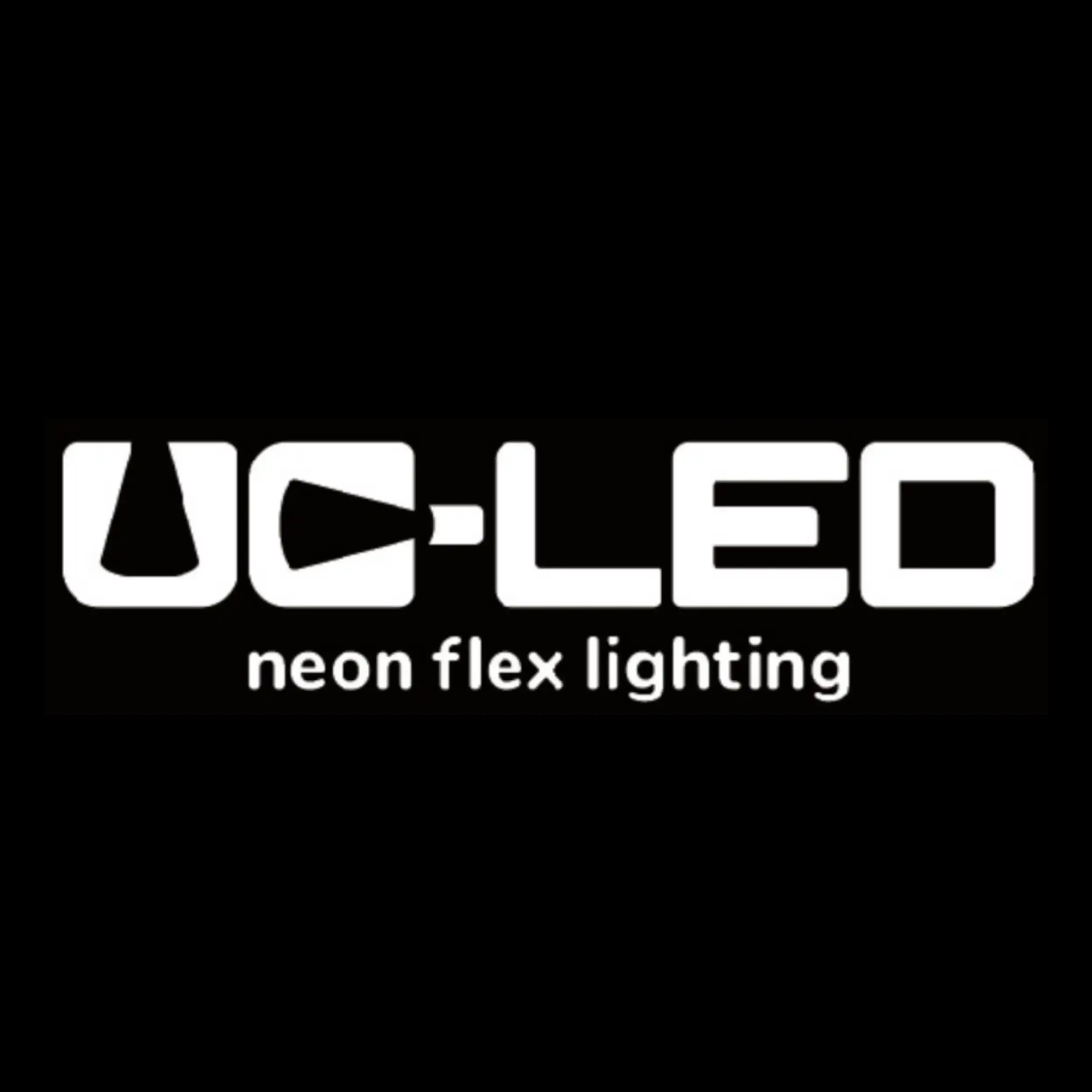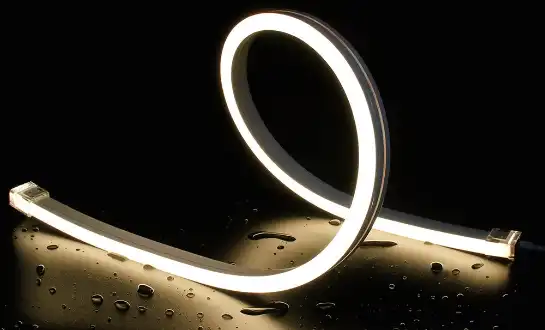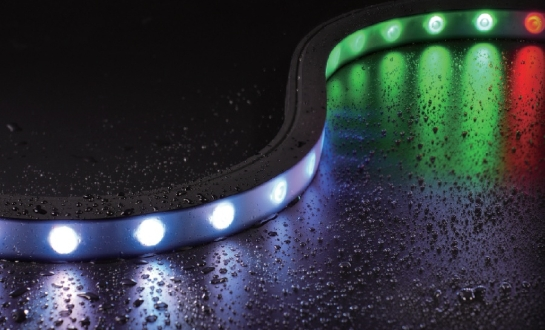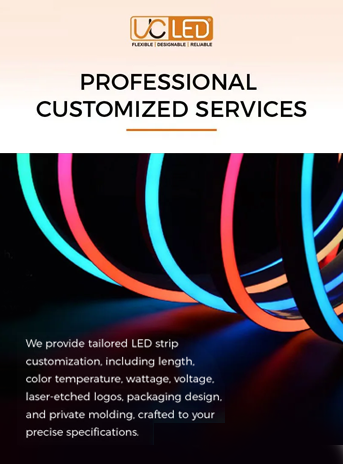Understanding the Importance of Heat Dissipation for LED Strips
Effective heat dissipation is paramount when it comes to the performance and lifespan of flexible LED strips. As these versatile lighting solutions continue to gain popularity in various applications, from home decor to commercial lighting, understanding the role of heat management becomes increasingly important.
LED strips, while energy-efficient, still generate heat during operation. This heat, if not properly managed, can lead to a range of issues:
- Decreased light output over time
- Color shifting
- Shortened lifespan of the LEDs
- Potential safety hazards in extreme cases
Aluminum channels serve as an excellent solution for heat dissipation, playing a crucial role in preserving the performance and longevity of LED installations. The high thermal conductivity of aluminum allows it to efficiently draw heat away from the LED strip, functioning as a natural heat sink.
By evenly distributing and releasing excess heat, these channels prevent overheating, color degradation, and brightness loss. Additionally, they contribute to overall system stability, reduce maintenance needs, and ensure that the LEDs operate at peak efficiency throughout their lifespan, even in demanding environments.
Benefits of Using Aluminum Channels with Flexible LED Strips
Incorporating aluminum channels into your LED strip installation offers several advantages:
- Enhanced Heat Dissipation: The primary benefit is improved thermal management, keeping your LEDs cool and efficient.
- Protection: Channels shield the LED strips from dust, moisture, and physical damage.
- Aesthetic Appeal: They provide a clean, professional look to your lighting installation.
- Light Direction: Channels can help focus and direct the light output for more precise illumination.
- Easy Installation: Many aluminum channels come with accessories that simplify the mounting process.
By understanding these benefits, you can make informed decisions about incorporating aluminum channels in your LED lighting projects, ensuring optimal performance and longevity. Properly integrated aluminum profiles not only enhance heat dissipation but also improve light diffusion, protect LED strips from dust and moisture, and contribute to a clean, professional appearance.
Whether used in residential, commercial, or architectural applications, aluminum channels provide a reliable foundation for durable, efficient, and visually appealing lighting designs that maintain brightness, consistency, and functionality over time.

Step-by-Step Guide to Installing LED Strips on Aluminum Channels
Now that we've established the importance of heat dissipation and the benefits of aluminum channels, let's dive into the installation process. This step-by-step guide will help you achieve a professional-looking installation that maximizes the performance of your flexible LED strips.
Preparation and Planning
Before you begin the installation, gather all necessary materials and tools:
- Flexible LED strip
- Aluminum channel with diffuser cover
- Power supply
- LED controller (if using)
- Measuring tape
- Scissors or LED strip cutter
- Screwdriver
- Mounting screws or adhesive tape
- Wire strippers (if needed)
Measure the area where you plan to install the LED strip and cut both the strip and aluminum channel to the appropriate length. Remember, most LED strips have designated cutting points marked on them to ensure safe trimming without damaging the circuitry, ensuring proper functionality and seamless installation alignment.
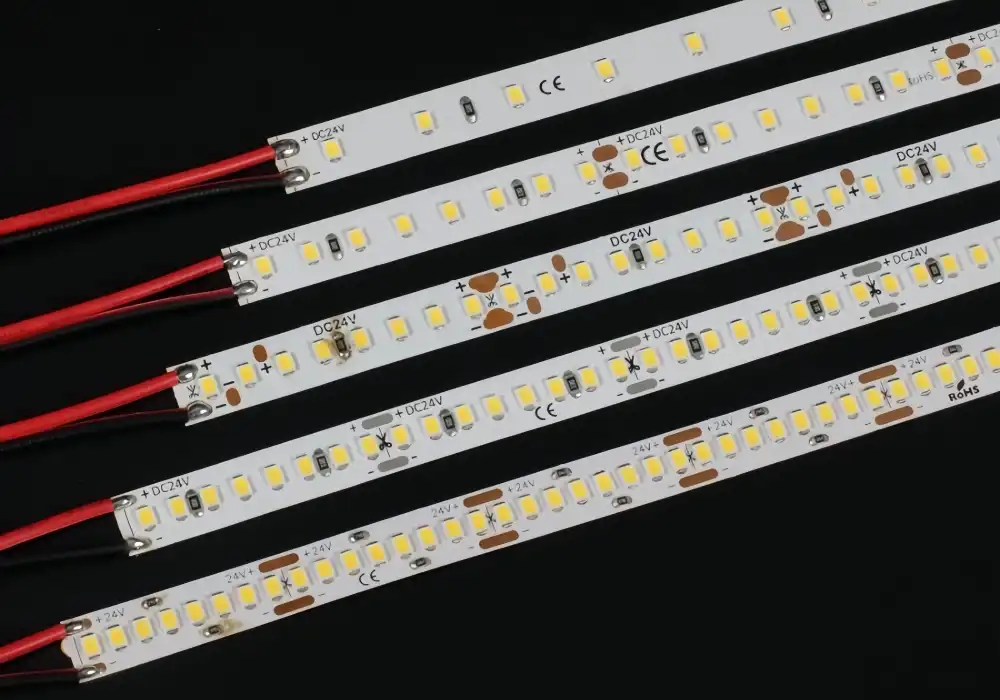
Installing the Aluminum Channel
1. Clean the mounting surface thoroughly to ensure good adhesion.
2. If using screws, mark the positions for the mounting brackets and drill pilot holes.
3. For adhesive mounting, apply double-sided tape to the back of the aluminum channel.
4. Carefully position the channel and secure it in place using either the screws or by pressing firmly if using adhesive.
Mounting the LED Strip
1. Clean the inside of the aluminum channel to remove any debris.
2. Carefully peel off the backing of the LED strip, exposing the adhesive.
3. Starting at one end, align the LED strip in the center of the channel and press it down gently.
4. Continue adhering the strip along the length of the channel, ensuring it's straight and centered.
5. If your installation requires multiple strips, connect them securely using appropriate connectors.
Connecting Power and Controls
1. Connect the LED strip to the power supply, ensuring proper polarity.
2. If using a controller, connect it between the power supply and the LED strip.
3. Secure all connections and ensure they're properly insulated.
4. Test the LED strip to confirm proper function before finalizing the installation
Finishing Touches
1. Once everything is working correctly, carefully snap the diffuser cover onto the aluminum channel.
2. Clean the installation area, removing any fingerprints or debris from the channel and diffuser.
3. Perform a final test to ensure everything is working as expected.
By following these steps, you'll achieve a professional-looking installation that not only enhances the aesthetic appeal of your space but also ensures optimal performance and longevity of your flexible LED strips.
Troubleshooting Common Issues in LED Strip Installations
Even with careful planning and installation, you may encounter some challenges with your LED strip setup. Here are some common issues and their solutions:
Uneven Lighting or Dark Spots
If you notice uneven lighting or dark spots along your LED strip, it could be due to:
- Inconsistent contact between the LED strip and the aluminum channel
- Damaged LEDs on the strip
- Voltage drop over long runs
To address these issues:
- Ensure the LED strip is firmly and evenly adhered to the channel.
- Check for any visible damage to the strip and replace if necessary.
- For long runs, consider using a higher voltage strip or multiple power injection points.
Overheating Issues
If your LED strip is still overheating despite using an aluminum channel, consider:
- Checking if the power supply is appropriate for your LED strip's requirements
- Ensuring there's adequate airflow around the installation
- Verifying that the aluminum channel is making good contact with the mounting surface for optimal heat dissipation
Flickering or Inconsistent Performance
Flickering LEDs can be frustrating. Possible causes and solutions include:
- Loose connections: Check and secure all connection points.
- Incompatible dimmer: Ensure you're using a compatible LED dimmer if applicable.
- Power supply issues: Verify that your power supply can handle the load and is functioning correctly.
By addressing these common issues, you can ensure your Flexible LED Strip installation performs optimally, providing reliable and efficient lighting for years to come. Regular maintenance, proper wiring, and adequate heat management are key to preventing premature failure or uneven illumination.
Additionally, using high-quality power supplies, connectors, and mounting accessories enhances system stability and safety. By taking a proactive approach to troubleshooting and upkeep, you can preserve brightness, color accuracy, and overall performance, ensuring your LED lighting continues to deliver consistent, professional-quality results over its lifespan.
Conclusion
Installing flexible LED strips on aluminum channels is an effective way to enhance both the performance and aesthetic appeal of your lighting setup. By following the steps outlined in this guide, you can achieve a professional-looking installation that maximizes heat dissipation, prolongs the life of your LEDs, and delivers superior lighting quality.
Remember, the key to a successful installation lies in careful planning, proper preparation, and attention to detail. Whether you're illuminating a home interior, creating accent lighting for a commercial space, or designing an eye-catching display, the combination of flexible LED strips and aluminum channels offers a versatile and efficient lighting solution.
For those seeking high-quality LED strip products and expert guidance, consider partnering with a reputable LED strip manufacturer or supplier. Their expertise can prove invaluable in selecting the right products and troubleshooting any issues that may arise during your installation process.
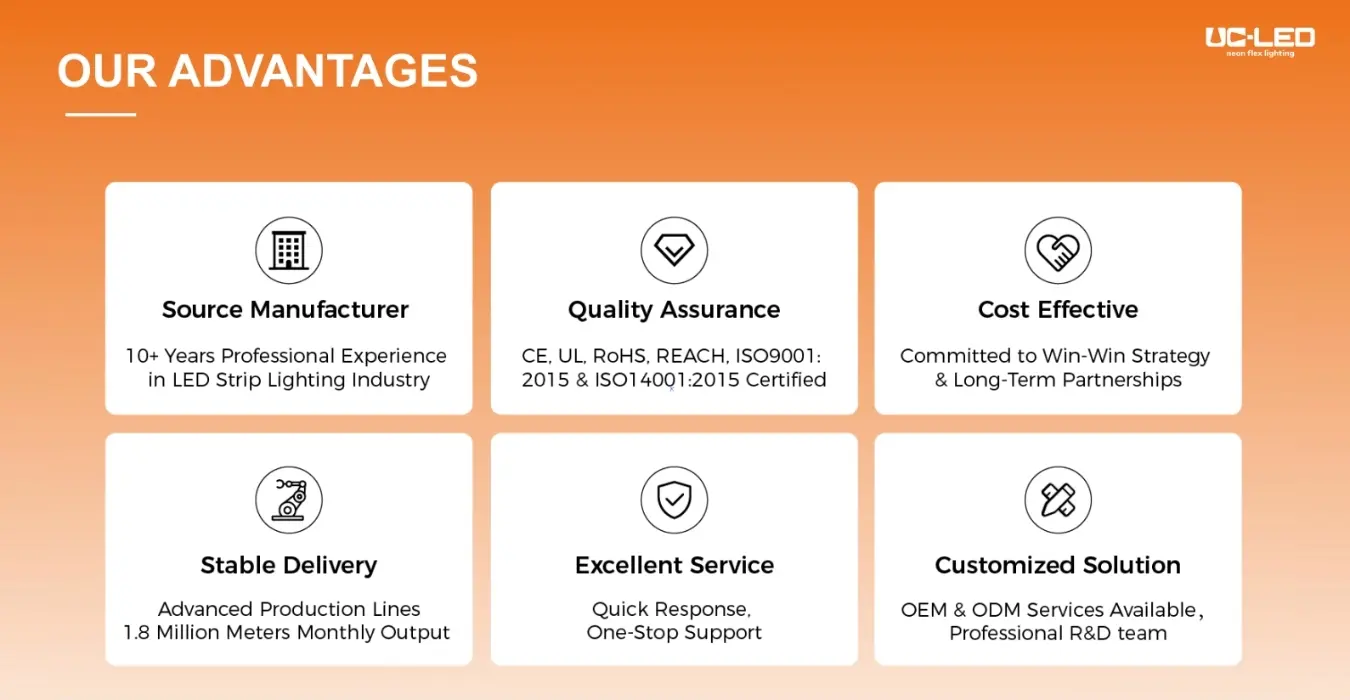
FAQ
Can I install LED strips without an aluminum channel?
While possible, it's not recommended. Aluminum channels provide crucial heat dissipation and protection, enhancing performance and longevity.
How do I choose the right aluminum channel for my LED strip?
Consider the width and depth of your LED strip, desired light diffusion, and mounting location. Consult with a professional LED strip supplier for guidance.
Are there waterproof options for outdoor installations?
Yes, many manufacturers offer IP-rated LED strips and sealed aluminum channels suitable for outdoor use. Always verify the product specifications for your specific needs.
Professional LED Strip Solutions | QUAN HE
QUAN HE Lighting Co., Ltd., established in 2015, is a leading manufacturer of premium linear lighting products. With our state-of-the-art 5,000m² factory and expert R&D team, we offer superior quality flexible LED strips and customized lighting solutions. Our ISO-certified manufacturing processes and UL, CE, and ROHS certifications ensure top-notch products for diverse applications. For professional LED strip solutions tailored to your needs, contact our team at Linda@uc-led.com.

source: LED Light
References
1. Johnson, M. (2022). "Thermal Management in LED Lighting Systems." Journal of Illumination Engineering, 45(3), 78-92.
2. Smith, A. & Brown, R. (2021). "Advancements in LED Strip Technology and Installation Techniques." Lighting Design Quarterly, 18(2), 112-125.
3. Taylor, E. (2023). "Optimizing Heat Dissipation in Flexible LED Strip Installations." International Conference on Lighting Technology Proceedings, 287-301.
4. Williams, D. et al. (2022). "Comparative Analysis of Aluminum Channels for LED Strip Heat Management." Applied Thermal Engineering, 76, 1245-1260.
5. Chen, L. & Wang, H. (2023). "Innovative Approaches to LED Strip Mounting and Heat Dissipation." Advanced Materials for Lighting Applications, 2nd Edition, Wiley Publishing.

